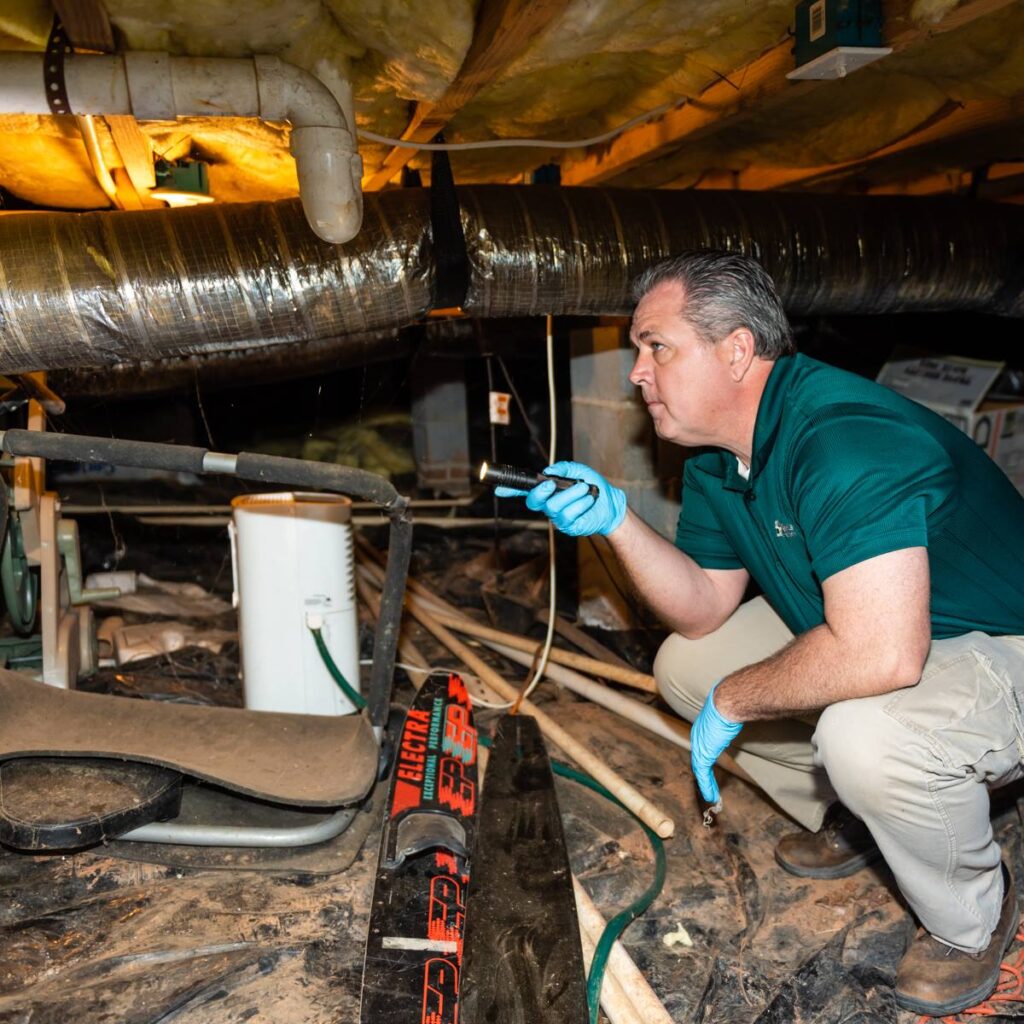For commercial properties, the presence of pests is more than an inconvenience, it’s a risk to health, reputation, and the bottom line. From food service establishments and retail shops to warehouses and office complexes, every building type faces unique vulnerabilities that pests are quick to exploit. A single unnoticed infestation can escalate into a costly, disruptive event that puts businesses on the defensive.
This is why scheduling a regular pest inspection is not just a precaution, it’s a critical part of maintaining operations. Commercial environments provide consistent food sources, shelter, and warmth, making them ideal targets for cockroaches, rodents, ants, spiders, and more. Inspections provide the first line of defense against these threats, catching early signs before they turn into infestations that require expensive remediation.

Why Commercial Properties Are Pest Magnets
Commercial buildings attract pests for several reasons, most of which revolve around food, warmth, and shelter. Unlike residential spaces, many commercial properties see higher foot traffic, increased waste production, and frequent delivery and utility access, each creating new entry points or attractants.
Here are some of the main reasons why these spaces are so susceptible:
- Waste accumulation: Restaurants and retail shops produce more food waste and packaging debris, which can attract a range of pests.
- Moisture buildup: Leaky pipes in commercial kitchens or HVAC systems can create ideal breeding spots, particularly for cockroaches.
- Extended hours or 24/7 operation: Continuous activity can mean less time for deep cleaning or regular maintenance.
- Storage areas: Dark, quiet places like stockrooms or loading docks often go unmonitored, allowing pests to nest undisturbed.
Once pests gain access to a building, they tend to remain hidden until the population has grown. By the time visible signs appear, structural damage or contamination risks may already be in motion. Some pests, like cockroaches, are known to spread harmful bacteria, as explained in this resource on cockroach eggs in Greenville.
Key Areas Covered During Inspections
An effective commercial pest inspection should be thorough and strategic. Trained inspectors follow a structured process to identify current issues and spot future risks. These include:
- Interior spaces: Kitchens, break rooms, restrooms, offices, and storage areas are all inspected for droppings, gnaw marks, nesting material, and other pest indicators.
- Utility systems: Inspectors assess plumbing, ventilation, and HVAC systems for leaks, condensation, or gaps that allow pest entry.
- Entry points: Cracks in walls, loading docks, window seals, and doors are checked for breaches.
- Food and waste storage: Commercial kitchens and garbage zones are reviewed to ensure hygiene standards are met.
- Exterior perimeters: Landscapes, dumpsters, and foundation cracks are evaluated as potential pest highways into the building.
By consistently inspecting these areas, facility managers gain insight into which vulnerabilities need attention. This proactive approach is far less expensive and disruptive than reacting to an active infestation.
Benefits of Routine Pest Monitoring
Implementing a regular pest inspection schedule does more than just catch a few insects, it provides long-term protection and regulatory compliance. Here are the most impactful benefits:
- Prevents structural damage: Rodents and termites can chew through walls, wiring, and insulation if left unchecked.
- Reduces health risks: Pests like roaches and rodents can spread bacteria, triggering allergic reactions and contaminating surfaces.
- Protects reputation: Especially important for food establishments and hospitality, where pest sightings can impact online reviews and brand trust.
- Improves sanitation scores: Regular inspections help meet health codes and reduce the likelihood of fines or closures.
- Saves money long-term: Catching issues early avoids expensive treatments, business interruptions, and repairs.
In fact, many businesses today recognize the environmental advantages of professional pest management as it promotes sustainable prevention strategies over heavy-handed chemical use.
What Happens If You Skip Inspections?
Delaying or skipping a regular pest inspection can result in cascading problems. Infestations often grow out of sight, inside walls, under floorboards, or above ceiling panels. A business might remain unaware until customers or employees notice, which is when the damage is already well underway.
Here’s what businesses risk by neglecting inspections:
- Costly repairs from termite or rodent damage
- Health department citations or shutdowns
- Product contamination or loss
- Negative customer reviews and brand damage
- Emergency treatments that are more invasive and expensive
Even seemingly minor pests can create ripple effects. A few ants may suggest a hidden colony, while one mouse could point to a larger rodent problem. Regular inspections remove the guesswork.
When to Schedule and What to Expect
Pest inspection frequency should be based on business type, location, and season. Food establishments and properties in humid climates typically require more frequent checks. A general recommendation is:
- Monthly inspections for food service and high-risk properties
- Quarterly inspections for low-risk offices or storage spaces
- Seasonal inspections to account for changing pest behavior throughout the year
Expect a detailed report after each inspection, noting the findings, risk levels, and recommended treatments or repairs. The goal is to create an action plan tailored to your building’s needs, not a one-size-fits-all solution.
Stay One Step Ahead of Infestations
Preventing pest problems before they start is always better than scrambling after they’re discovered. With scheduled inspections, commercial properties can remain compliant, safe, and inviting for both employees and customers.To set up a smart inspection plan designed specifically for your business, contact Greenville Pest Control. Our team offers precision-driven assessments that identify issues early, apply safe solutions, and help your facility maintain a pest-free environment all year long.


